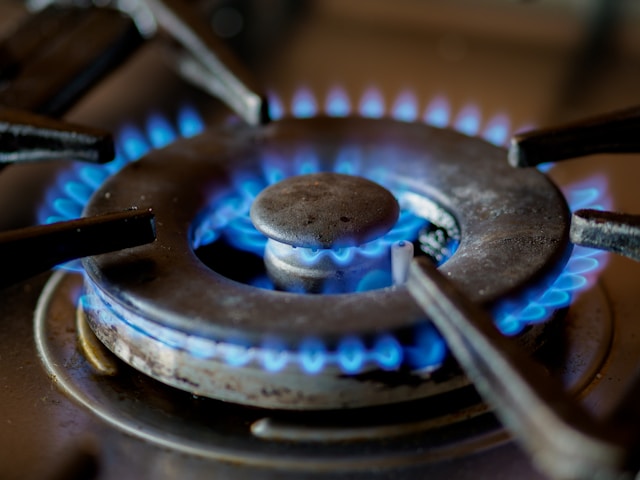
Picture: Unsplash
The kitchen is the center of your house, yet hidden dangers like gas leaks can pose significant problems. Your home’s safety depends on your ability to identify the early warning indicators of a gas leak. This article will examine some important signs that could indicate a gas leak in your kitchen and help you respond appropriately and quickly.
1. Recognizing the Odor: Unusual Smell
One of the most obvious indicators of a possible gas leak is the characteristic rotten egg-like smell of natural gas. This distinctive smell, which manufacturers purposefully add, is essential to improving the detectability of gas leaks. The first line of defense in spotting this alarming problem is your sense of smell, especially if you’re close to gas-powered appliances. If you smell this strange smell, you should investigate quickly and thoroughly because it could be a safety hazard. Put safety first by taking quick action to ease any worries or suspicions regarding gas smells, protecting both you and other people’s safety. Understanding the significance of this olfactory alert empowers you to take proactive measures, reinforcing the importance of a gas line installation, gas leak awareness, and immediate action when needed.
2. Hissing Sounds: Paying Attention to Unusual Noises
Whistling or hissing noises close to the source are an important but frequently missed indicator of a possible gas leak. When gas appliances or gas lines are nearby, these audio cues become more noticeable signs. It’s critical to take quick steps if you hear these strange noises since they could be indicators of a gas leak. Your auditory sense plays a crucial part in this safety calculation by providing an extra level of detection. It is possible to considerably reduce threats and guarantee the security of your surroundings by promptly recognizing and reacting to these sounds. It emphasizes the need for auditory attention and gives you the tools you need to take prompt action and prevent gas-related hazards. Remain attuned to any unfamiliar sounds, as they may serve as critical alerts, empowering you to protect yourself and others from potential gas hazards.
3. Dead or Discolored Plants: Outdoor Clues
Particularly if you have outdoor plants next to your gas lines, nature can frequently provide subtle hints about possible gas leaks. Pay close attention to the health of these plants since dying or discolored leaves near gas pipes could indicate a leak that is affecting the surrounding ground. Plants exhibit sensitivity to alterations in their environment and serve as silent conveyors of sorrow. You should move quickly to investigate the likelihood of a gas leak if you see any odd patterns in your outside vegetation. Through the use of nature’s alarms, this outdoor observation adds another level of awareness to identify and mitigate possible threats. You may improve your ability to keep both indoor and outdoor environments safe and secure by integrating plant health into your gas leak awareness.
4. Physical Symptoms: Recognizing Health Effects
Even in the absence of obvious symptoms, gas leaks can have negative health consequences. It is critical to rule out the likelihood of a gas leak if you or any members of your family feel symptoms like headaches, nausea, dizziness, or inexplicable exhaustion. These bodily cues function as vital warnings that indicate possible chemical exposure. When such symptoms appear, quick action is required, which calls for a comprehensive inspection and, if necessary, a building evacuation. Understanding the connection between physical health and gas leaks emphasizes how critical it is to act quickly to protect everyone in your home from harm. Make it a priority to take preventative measures by being aware of these bodily symptoms and interpreting them as important indicators so that any potential gas-related concerns can be swiftly addressed.
5. Bubbles in Water: Checking for Gas Escapes
Leaks in gas can be found by performing a simple test that works well. If bubbles appear when you apply soapy water to suspected gas connection locations, it is obvious that there is a gas leak. This do-it-yourself technique is a fast and accurate way to find gas leaks. The emergence of bubbles indicates that gas is leaking, so the problem needs to be addressed right away. By adding this straightforward but effective method to your tool set for identifying gas leaks, you give yourself the ability to respond quickly and protect your surroundings. Take prompt action to resolve any issues that surface and use this visual indication as a preventative step against any gas-related hazards.
Conclusion
Being vigilant about gas leak signs in your kitchen is paramount for the safety of your household. Prioritize your safety above all else by leaving the area as soon as you see any of these signs, turning off the gas supply, and getting help from a professional as soon as possible.


